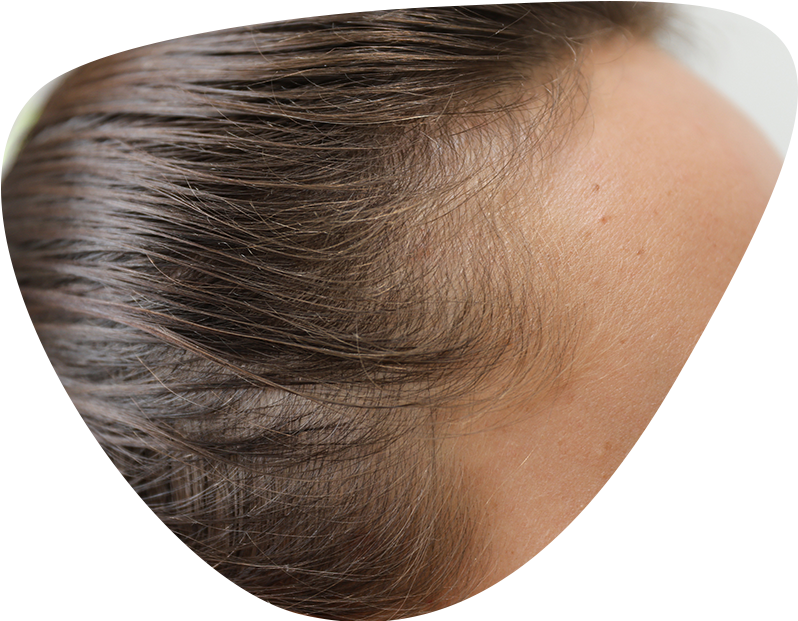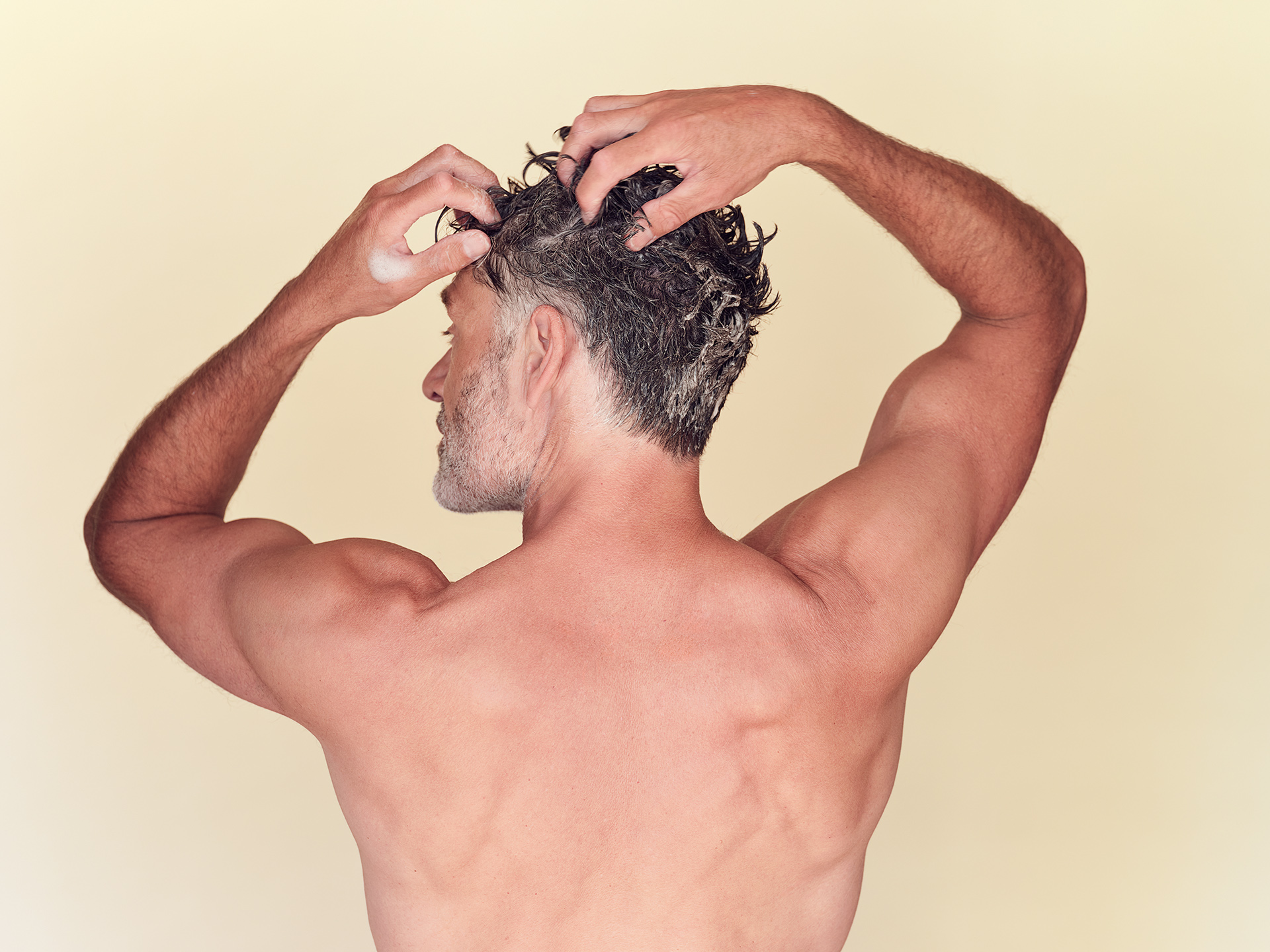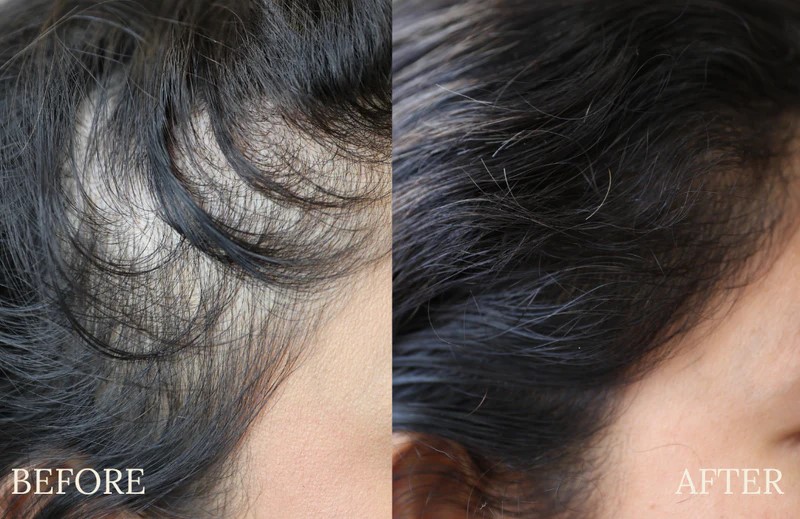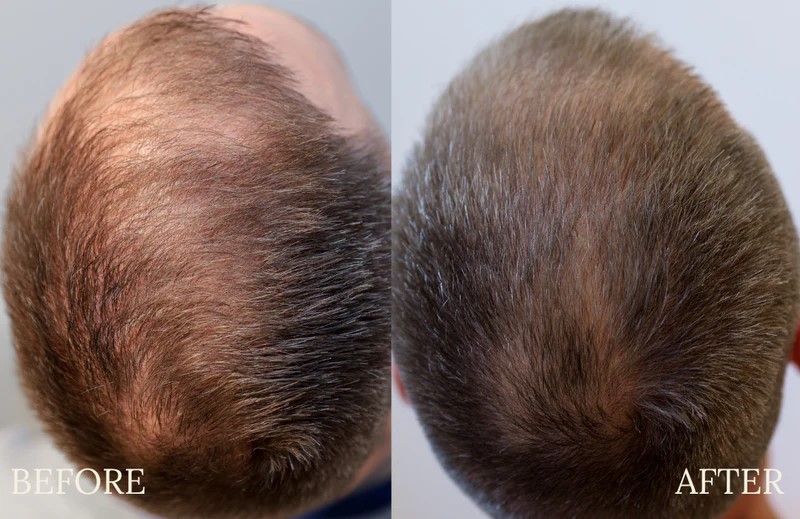
Hair thinning? You’re not alone—and it’s not the end. Hair loss affects most men, one-third of women, and Slovakia ranks among the top countries. The good news? You can do something about it.
When to take action? The 60-second rule can help
Hair shedding is completely normal—some hairs are in the exogen phase, when the hair naturally detaches from the follicle to make way for a new one. It becomes a problem when shedding outpaces regrowth. You may have heard that losing around 100 hairs a day is nothing to worry about. But how do you know? Try the 60-second hair comb test. You’ll need a comb and a white cloth or towel. Before washing your hair, comb it gently for one minute and count how many hairs fall out. Around 10 is normal. If you see more than 50, it’s time to act.
Signs and causes of hair loss
The signs are often obvious: receding hairline, widening part, bald patches, or scalp itching. But identifying the root cause isn’t always simple. Possible reasons include:
- Genetics: Family history is the most common cause. If your parent or grandparent had thinning hair, chances are you will too.
- Lifestyle: Poor nutrition, lack of protein, vitamins or minerals, low physical activity, poor sleep, or sudden weight loss may all affect your hair.
- Hormones: Hormonal fluctuations during pregnancy, breastfeeding, or menopause can play a major role.
- Stress: High-stress periods can trigger hair shedding.
- Health conditions: Scalp infections, thyroid issues, or medications can all cause hair loss.
- Improper hair care: Silicone buildup, tight hairstyles, coloring, or chemical treatments can make it worse.

Depending on the cause, hair loss falls into different categories:
- Androgenetic alopecia: Hereditary or hormone-related thinning—most common in both men and women.
- Telogen effluvium: Temporary shedding caused by stress, trauma, or illness. Hair falls out suddenly but often grows back.
- Alopecia areata: Known as patchy hair loss—bald spots appear suddenly due to autoimmune triggers.

A hair care routine for thinning hair
You can’t always prevent hair loss, but you can do your best to protect the hair you still have. Here’s a care routine that supports prevention and recovery.
1. Shampoo with benefits
Shampoo is something we use daily, so choosing the right one is key. Stimulating Hair Shampoo Pure no. 22 by Zenz Organic is formulated for thinning hair and sensitive scalps. It contains active ingredient PROCAPIL® to promote growth. Fragrance-free, packed with natural extracts, and suitable for everyone.
2. Scalp detox
If your scalp isn’t balanced, healthy hair can’t grow. Once a week, treat it to a detox with Zenz Organic Hair & Scalp Rinse Fresh Herbs no. 87. It removes limescale and product buildup. Your hair will feel light, clean, and refreshed—you’ll love the sensation!
3. Go strong: use a tonic
If thinning is already visible, try an intensive treatment—Zenz Organic Anti Hair Loss Scalp Tonic Pure no. 23. Thanks to PROCAPIL®, it stimulates hair growth, strengthens follicles, rejuvenates, and helps anchor the hair.
Tip: Try a scalp massage! Gently press your fingertips and use circular motions. It’s relaxing—and effective.
4. Gentle handling
Hair can also fall out due to mechanical stress—brushing, styling, or even sleeping. Use a gentle brush with natural bristles, comb slowly, avoid tight hairstyles, and always apply heat protection.


